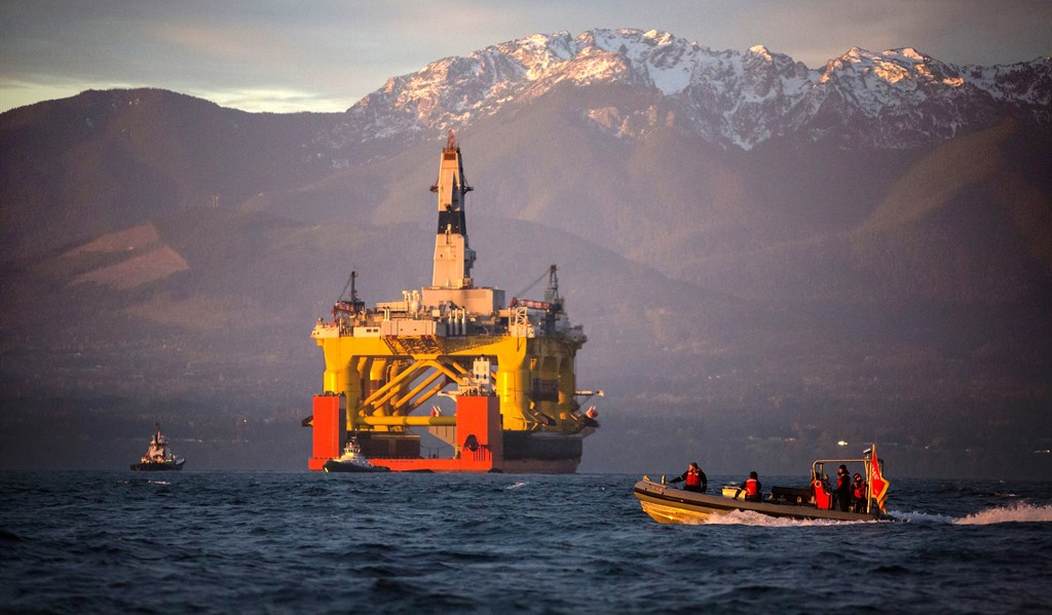“The Trump administration is preparing to unveil as soon as this week expansive offshore oil plan that would open the door to selling new drilling rights in Atlantic waters, according to people familiar with the plan… President Donald Trump ordered his Interior Department to write the new blueprint with the aim of auctioning oil and gas drilling rights off the U.S. East Coast -- territory that his predecessor, former President Barack Obama, had had ruled out.”
Don’t get me wrong! Cheaper energy and greater energy independence for our nation are nothing to sneeze at! But many of us familiar with the “collateral benefits” of offshore oil drilling envision yet another “win-win” resulting from this Presidential order.
You see, amigos: With over 3000 of the 3,700 offshore oil and gas production platforms in the Gulf of Mexico off her coast, Louisiana provides almost a third of North America's commercial fisheries. As a trivial sideline these oil production platforms also extract 80 percent of the oil and 72 percent of the natural gas produced in the Continental U.S.
A study by LSU's sea grant college found that a majority of Louisiana's offshore fishing trips (among the state’s top tourist attractions) target these offshore oil production structures. Recreational fishing and diving trips to these structures generate an estimated 5,560 full time jobs and $324 million annually for Louisiana.
"Oil platforms as artificial reefs support fish densities 10 to 100 times that of adjacent sand and mud bottom, and almost always exceed fish densities found at both adjacent artificial reefs of other types and natural hard bottom," says a study by Dr Bob Shipp, professor at the Marine Sciences department of the University of South Alabama in Mobile, Alabama, and currently, the vice-chair of the Gulf of Mexico Fisheries Management Council.
Recommended
In fact, the most prolific and diverse marine ecosystem ever recorded by marine scientists was created by offshore oil production. Acting as artificial reefs over the past half century, the teeming fish life, coral colonies, and “bio-diversity,” created by offshore oil platforms is amply documented in several studies commissioned by none other than the U.S. Dept. of the Interior.
One recent report by the Bureau of Ocean Energy Management Minerals (a division of the U.S. Dept. of the Interior) boasts that “fish densities are 20 to 50 times higher at oil and gas platforms than in nearby Gulf water, and each platform seasonally serves as critical habitat for 10 to 20 thousand fishes.”
In fact, “villainous” Big Oil produces marine life at rates that puts to shame “wondrous” Earth Goddess Gaia. “The fish Biomass around an offshore oil platform is ten times greater per unit area than for natural coral reefs,” also found Dr. Charles Wilson of LSU’s Dept. of Oceanography and Coastal Science (emphasis added). "Ten to thirty thousand adult fish live around an oil production platform in area half the size of a football field.”
"Evidence indicates that massive areas of the northwestern Gulf of Mexico were essentially empty of snapper stocks for the first hundred years of the fishery,” found the study by Dr Shipp. “Subsequently, areas in the western Gulf have become the major source of red snapper, concurrent with the appearance of thousands of petroleum platforms."
More recently, the red snapper catch from the northwestern Gulf (Louisiana, studded with oil platforms) is estimated 6 to 7 times greater than the catch from the eastern Gulf (bereft of oil platforms.)" That this proliferation of seafood came because — rather than in spite — of the oil production has rattled many environmental cages, but the proof of this pudding is (literally) in the eating!
“But you’re very conveniently “forgetting” the infamous BP oil spill!” comes the Greenie-Weenie retort.
Glad you mentioned that. Because only one year after the infamous spill, the FDA’s Gulf Coast Seafood Laboratory, the National Oceanic and Atmospheric Administration’s National Seafood Inspection Laboratory, the Louisiana Department of Wildlife and Fisheries, the Louisiana Department of Health and Hospitals, along with similar agencies from neighboring Gulf coast states, have methodically and repeatedly tested Gulf seafood for cancer-causing “polycyclic aromatic hydrocarbons.”
“Not a single sample [for oil or dispersant] has come anywhere close to levels of concern,” reported Olivia Watkins, executive media advisor for the Louisiana Department of Wildlife and Fisheries.
“All of the samples have been 100-fold or even 1,000-fold below all of these levels,” reports Bob Dickey, director of the FDA’s Gulf Coast Seafood Laboratory. “Nothing ever came close to these levels.”
“Fine!” snivel the greenie tinfoil-hatters. “But kindly define what constitutes this “level of concern.”
“The small amount of hydrocarbons in a seafood meal is much less than the exposure from pumping gas,” explained the LA Department of Health and Hospitals’ Dr. Jimmy Guidry.
If most of the above sounds totally “CRAZY!” If it seems to turn most environmental dogma on its head! ....Well, a spanking new Christmas issue book thoroughly documents this fishing bonanza, much of it thanks to offshore oil drilling.

























Join the conversation as a VIP Member